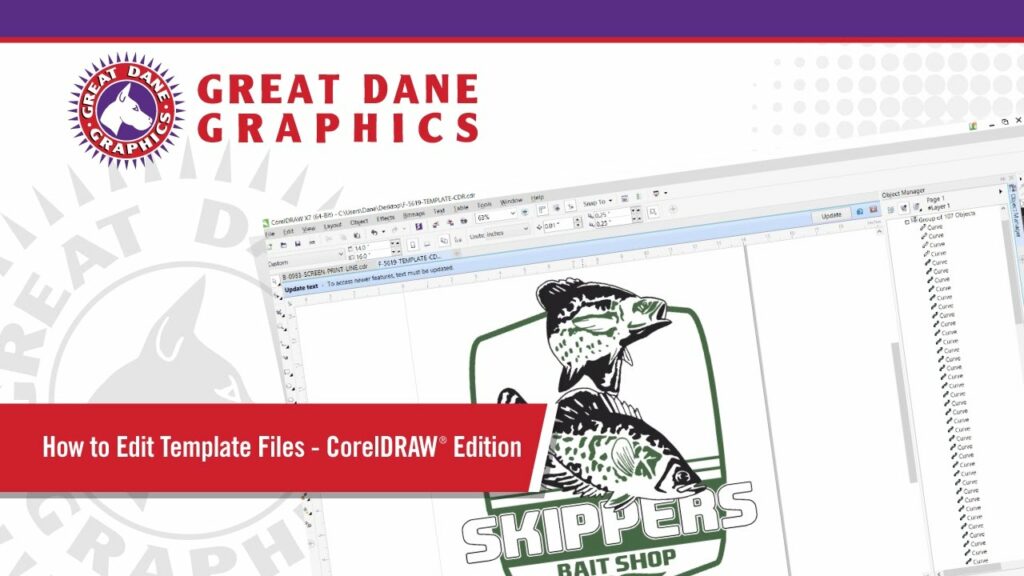Unleashing Creativity: A Comprehensive Guide to Editing Templates in CorelDRAW

Introduction:
CorelDRAW, a versatile vector graphics editor, empowers designers to bring their creative visions to life. One of its standout features is the ability to edit templates, providing a flexible foundation for design projects. In this extensive guide, we will delve into the intricacies of editing templates in CorelDRAW, covering everything from basic modifications to advanced customization techniques.
Section 1: Understanding Template Structure
1.1 Layers and Objects: Gain a comprehensive understanding of the structure of CorelDRAW templates. Explore how layers and objects are organized within templates, providing a roadmap for efficient and targeted editing.
1.2 Placeholder Text and Images: Recognize the significance of placeholder text and images within templates. Learn how to seamlessly replace these placeholders with your content, ensuring a cohesive and personalized design.
Section 2: Basic Template Modifications
2.1 Adjusting Text and Fonts: Dive into the process of modifying text elements within templates. Understand how to change font styles, sizes, and colors to align with your design preferences and project requirements.
2.2 Swapping Images and Graphics: Explore the straightforward process of replacing placeholder images and graphics. Discover techniques for importing your visuals while maintaining the overall design integrity of the template.
2.3 Modifying Colors and Styles: Learn how to customize the color scheme and styles within templates. Uncover the power of CorelDRAW’s color palette and style options to create a personalized look while adhering to the template’s structure.
Section 3: Advanced Template Customization Techniques
3.1 Object Grouping and Ungrouping: Master the art of grouping and ungrouping objects within templates. Understand how this technique enhances precision and flexibility when editing complex template layouts.
3.2 Applying Effects and Filters: Explore the advanced features of applying effects and filters to template elements. Delve into the creative possibilities that arise from adding shadows, glows, and other effects to enhance visual appeal.
3.3 Utilizing Custom Shapes and Symbols: Harness the potential of custom shapes and symbols within templates. Learn how to incorporate unique design elements to tailor the template to specific project requirements.
Section 4: Saving and Updating Edited Templates
4.1 Saving Customized Templates: Understand the importance of saving your edited templates in a way that preserves the original while creating a new version. Explore various file formats and best practices for archiving your customized designs.
4.2 Version Control for Edited Templates: Implement version control strategies to manage edited templates effectively. Learn how to track changes, document revisions, and maintain a comprehensive history for collaborative and iterative projects.
Section 5: Troubleshooting and Tips
5.1 Handling Template Constraints: Address common challenges when editing templates, such as locked layers or constrained objects. Discover tips and workarounds to overcome these obstacles and achieve the desired modifications.
5.2 Collaboration and Feedback: Explore methods for collaborating on edited templates. Learn how to share your work with team members or clients, gather feedback, and incorporate suggested changes seamlessly.
Conclusion:
In conclusion, the ability to edit templates in CorelDRAW is a powerful skill that opens up a world of creative possibilities for designers. Whether making basic modifications or diving into advanced customization techniques, understanding the nuances of template editing is key to unleashing your creativity. So, whether you’re a seasoned designer looking to streamline your workflow or a newcomer eager to explore the possibilities, the comprehensive guide to editing templates in CorelDRAW serves as your roadmap to creating visually stunning and personalized designs.







